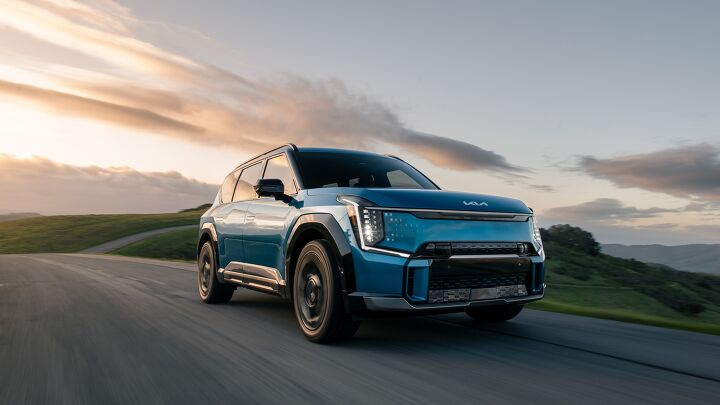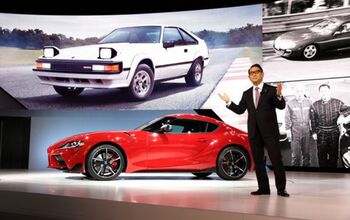These are the 2024 World Car of the Year Winners

Every year, different groups of auto journalists and industry professionals come together to choose a “best of” list to recognize vehicles in various categories. One of the groups is the World Car of the Year (WCOTY) jury, which includes journalists and professionals from several countries. They recently revealed their 2024 picks at the New York auto show, and it’s clear that legacy auto brands are facing increasingly tough competition.
First, the overall winner. The 2025 Kia EV9 is the World Car of the Year, with the BYD Seal and Volvo EX30 rounding out the top three. Jurors also break vehicles into categories for rankings, and the winners include:
· Design: Toyota Prius
· Urban Car: Volvo EX30
· Performance Car: Hyundai Ioniq 5 N
· Luxury Car: BMW 5 Series
· Electric Car: Kia EV9
· Overall: Kia EV9
Finalists for the awards include:
· Ford Bronco
· Hyundai Kona and Kona EV
· Hyundai Santa Fe
· Mazda CX-90
· Subaru Crosstrek
· Toyota Prius
· Volkswagen ID.7
Many of those names are familiar to Americans, but the list of candidates for awards is where things get really interesting. The WCOTY jury considered several Chinese brands this year, showing that the country’s automakers are pushing ahead at a feverish pace.
Brands that were considered from China include BYD, Dayun, Great Wall Motors, Maxus, Nio, Omoda/Chery, Seres, XPeng, and Zeekr. KG Mobility from South Korea also made the list of candidates.
To be eligible for an award, the vehicle must be produced in volumes of at least 10,000 units per year and must be priced below comparable premium options in at least two major markets. They must also be sold on at least two separate continents.
[Image: Kia]
Become a TTAC insider. Get the latest news, features, TTAC takes, and everything else that gets to the truth about cars first by subscribing to our newsletter.

Chris grew up in, under, and around cars, but took the long way around to becoming an automotive writer. After a career in technology consulting and a trip through business school, Chris began writing about the automotive industry as a way to reconnect with his passion and get behind the wheel of a new car every week. He focuses on taking complex industry stories and making them digestible by any reader. Just don’t expect him to stay away from high-mileage Porsches.
More by Chris Teague
Latest Car Reviews
Read moreLatest Product Reviews
Read moreRecent Comments
- Dartdude Having the queen of nothing as the head of Dodge is a recipe for disaster. She hasn't done anything with Chrysler for 4 years, May as well fold up Chrysler and Dodge.
- Pau65792686 I think there is a need for more sedans. Some people would rather drive a car over SUV’s or CUV’s. If Honda and Toyota can do it why not American brands. We need more affordable sedans.
- Tassos Obsolete relic is NOT a used car.It might have attracted some buyers in ITS DAY, 1985, 40 years ago, but NOT today, unless you are a damned fool.
- Stan Reither Jr. Part throttle efficiency was mentioned earlier in a postThis type of reciprocating engine opens the door to achieve(slightly) variable stroke which would provide variable mechanical compression ratio adjustments for high vacuum (light load) or boost(power) conditions IMO
- Joe65688619 Keep in mind some of these suppliers are not just supplying parts, but assembled components (easy example is transmissions). But there are far more, and the more they are electronically connected and integrated with rest of the platform the more complex to design, engineer, and manufacture. Most contract manufacturers don't make a lot of money in the design and engineering space because their customers to that. Commodity components can be sourced anywhere, but there are only a handful of contract manufacturers (usually diversified companies that build all kinds of stuff for other brands) can engineer and build the more complex components, especially with electronics. Every single new car I've purchased in the last few years has had some sort of electronic component issue: Infinti (battery drain caused by software bug and poorly grounded wires), Acura (radio hiss, pops, burps, dash and infotainment screens occasionally throw errors and the ignition must be killed to reboot them, voice nav, whether using the car's system or CarPlay can't seem to make up its mind as to which speakers to use and how loud, even using the same app on the same trip - I almost jumped in my seat once), GMC drivetrain EMF causing a whine in the speakers that even when "off" that phased with engine RPM), Nissan (didn't have issues until 120K miles, but occassionally blew fuses for interior components - likely not a manufacturing defect other than a short developed somewhere, but on a high-mileage car that was mechanically sound was too expensive to fix (a lot of trial and error and tracing connections = labor costs). What I suspect will happen is that only the largest commodity suppliers that can really leverage their supply chain will remain, and for the more complex components (think bumper assemblies or the electronics for them supporting all kinds of sensors) will likley consolidate to a handful of manufacturers who may eventually specialize in what they produce. This is part of the reason why seemingly minor crashes cost so much - an auto brand does nst have the parts on hand to replace an integrated sensor , nor the expertice as they never built them, but bought them). And their suppliers, in attempt to cut costs, build them in way that is cheap to manufacture (not necessarily poorly bulit) but difficult to replace without swapping entire assemblies or units).I've love to see an article on repair costs and how those are impacting insurance rates. You almost need gap insurance now because of how quickly cars depreciate yet remain expensive to fix (orders more to originally build, in some cases). No way I would buy a CyberTruck - don't want one, but if I did, this would stop me. And it's not just EVs.


































Comments
Join the conversation
Where's the heater control? Where's the Radio control? Where the bloody speedometer?? In a menu I suppose. How safe is that??? Volvo....
A design award for the Prius?!!!
Yes, the Prius is a great looking car, but the visibility is terrible from what I've read, notably Consumer Reports. Bad visibility is a dangerous, and very annoying design flaw.